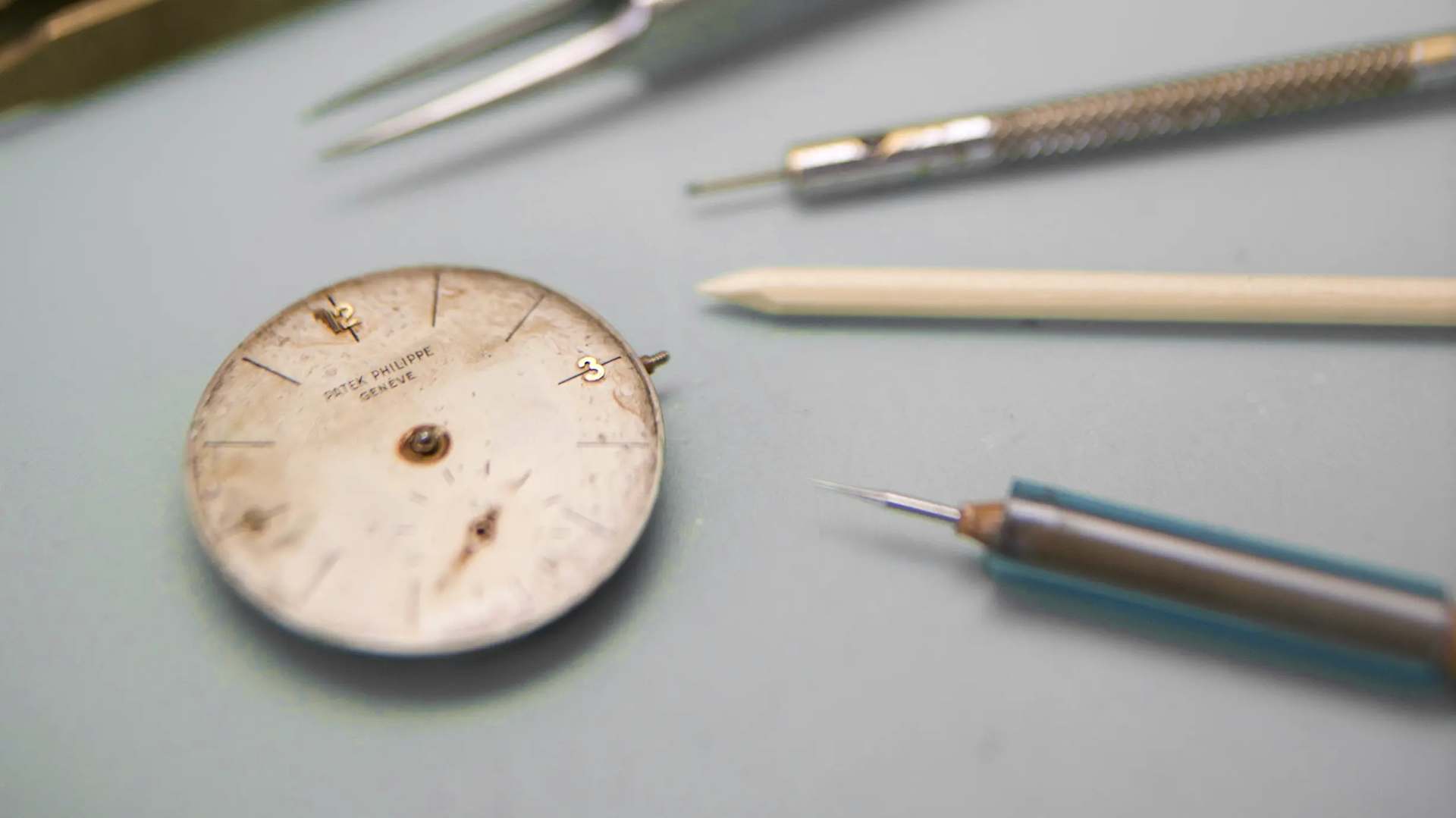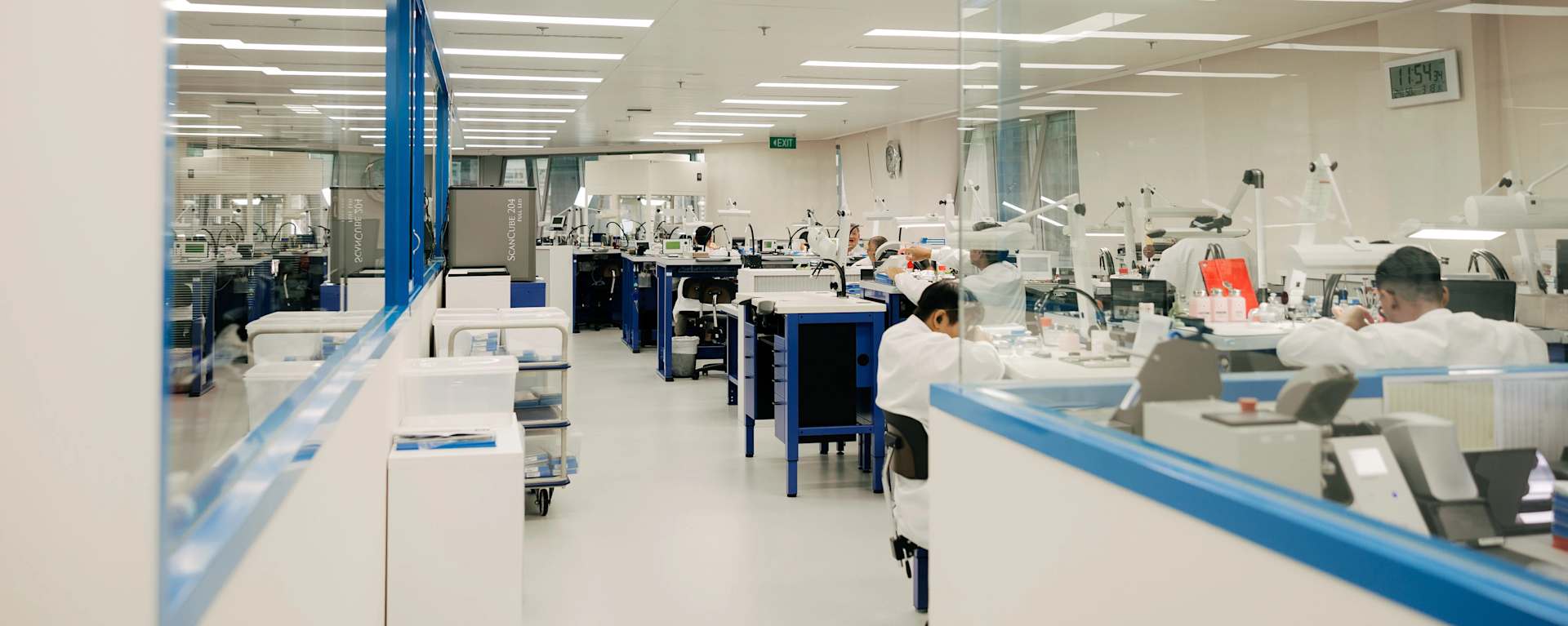Our Commitment to Service
The Art of Restoration
Maintaining watches over 45 years old requires specialized skills and techniques safeguarded and transmitted exclusively by Patek Philippe’s Geneva-based restoration workshop.
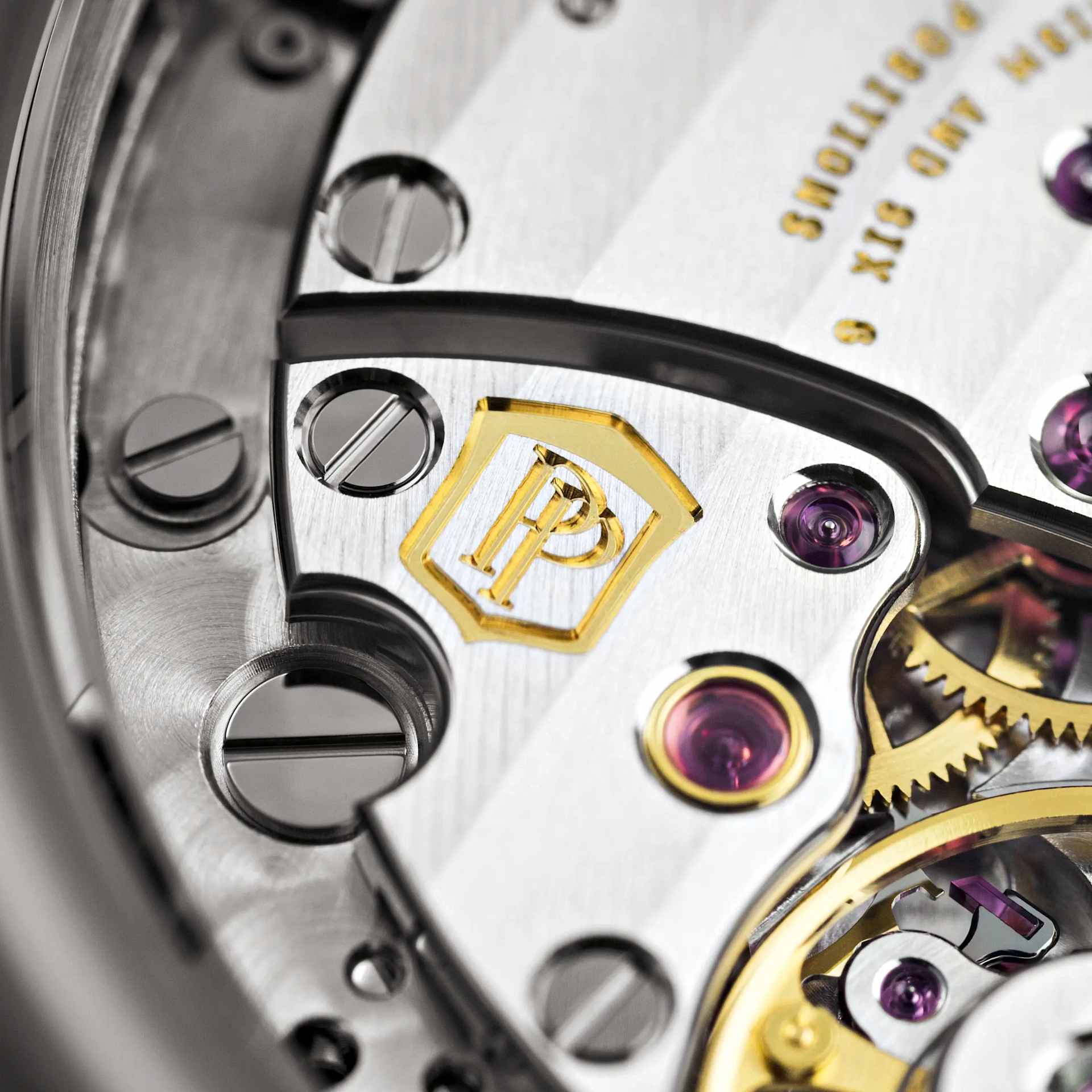
The Patek Philippe Seal
Our Commitment
In accordance with the extremely demanding criteria of the Patek Philippe Seal, we are committed to maintaining and repairing all watches produced by our Manufacture since 1839, while being keen to preserve the original components.
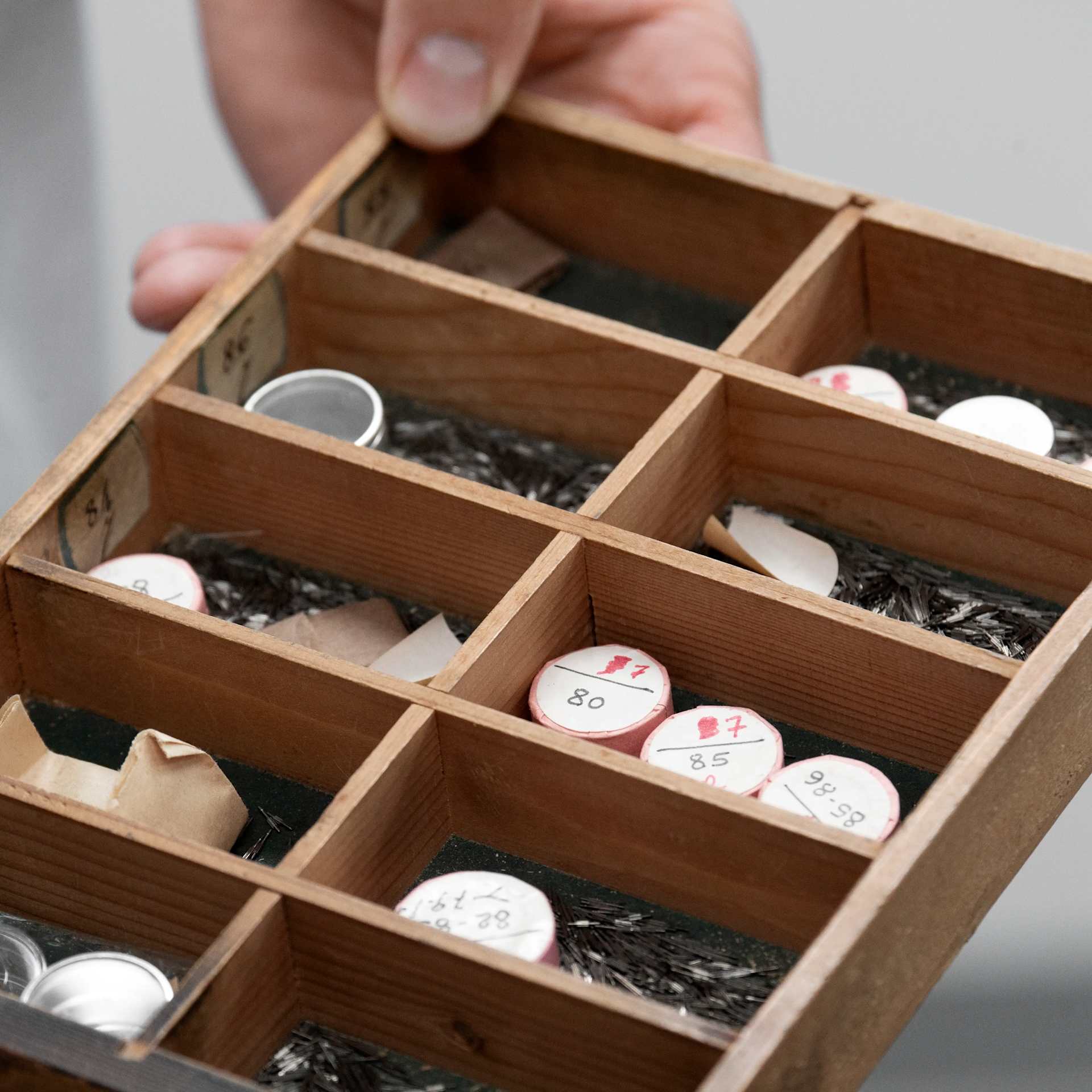
Heritage
Spare Parts Archive
The aim of our restoration atelier is to preserve the original condition of the watch, both technically and aesthetically, by retaining the original components of its movement or case wherever possible. To do so, our watchmaker-restorers maintain a stock of original components, cases, machines and production tools, some of them dating back to 1839.
Discover the art of restoration at Patek Philippe
The Art of Restoration
Pivoting
If some parts needed to restore an antique watch are unavailable, our watchmaker-restorers will recreate them by hand. For example, our skilled pivot makers can manually rebuild all the axes and wheels of a watch using original tools, ensuring precise restoration through expert craftsmanship.
At Patek Philippe, ancestral know-how is preserved and passed down without interruption, using time-honored methods. A dedicated workshop is entirely devoted to the restoration of pivots, safeguarding this rare expertise.
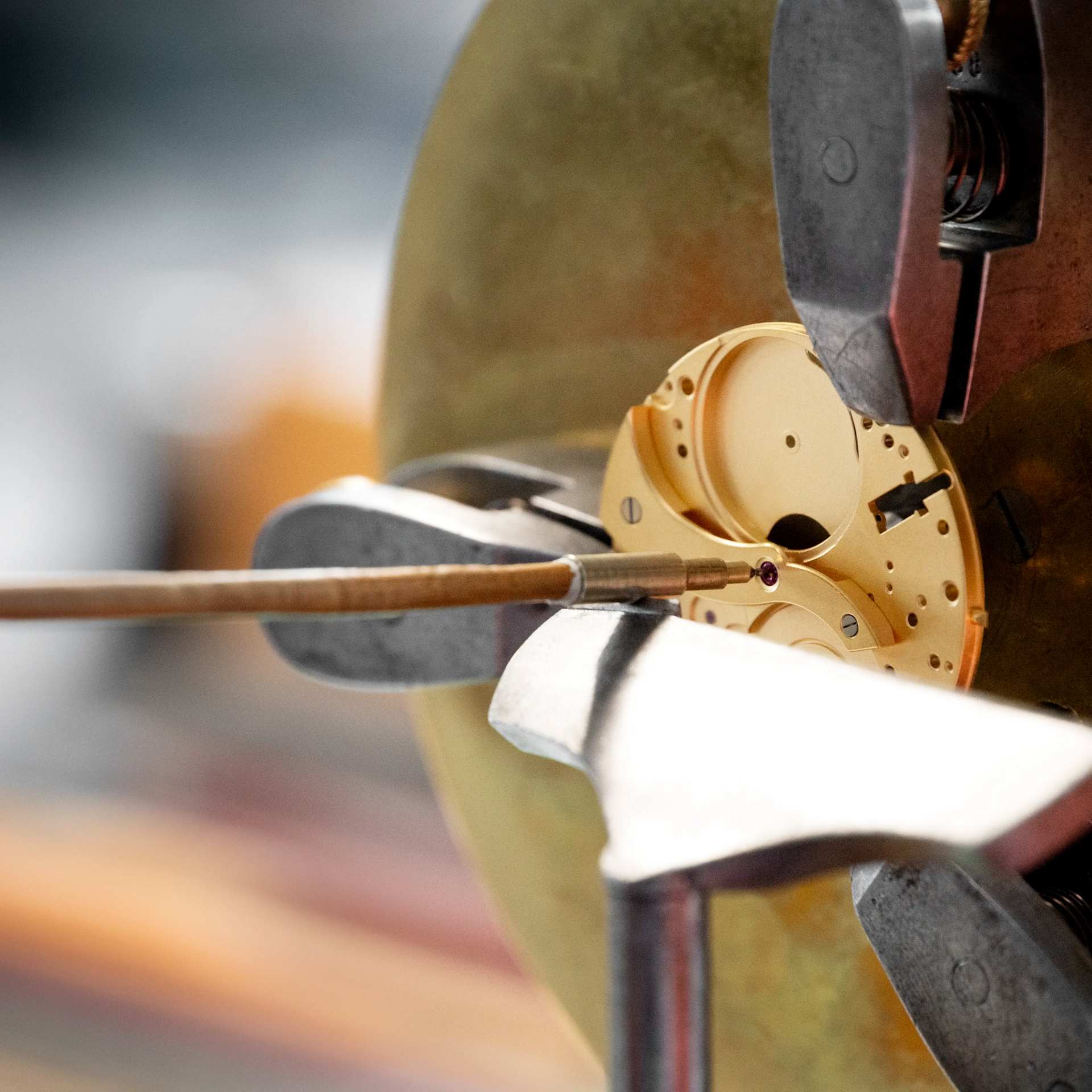
The restoration watchmaker’s tools
The Face-lathe
The face-lathe is a hand-operated lathe dating back approximately 200 years. It is used to rework the holes or replace stones in the plates and bridges. To ensure the cutting tool is perfectly aligned with the existing hole, watchmakers use a long wooden pointer to amplify any misalignment. Despite its age, this tool is still used daily in our workshops and allows for highly precise work – down to the micron.
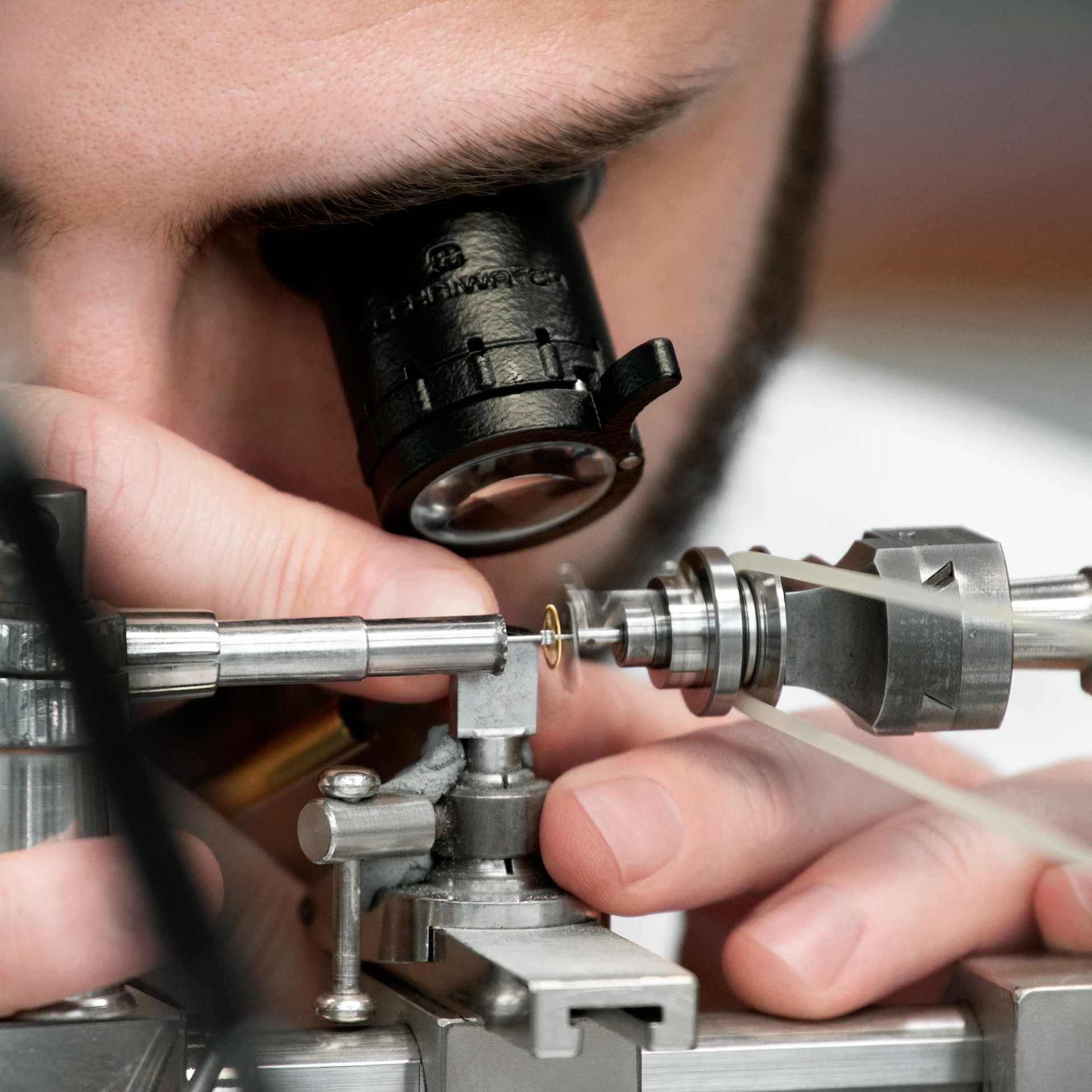
The Pivot Maker's Tool
The Pivoting lathe
The restoration watchmaker operates the pivoting lathe to restore a wheel. Using a metal graver, they turn a raw blank to achieve the exact diameter required for the finished wheel.
To verify the dimension, they use a hand micrometer and a comparator, both of these mesuring tools are easily precise to one hundredth of a milimeter. This highly meticulous work is carried out under a 12x magnifying loupe, demanding exceptional focus and dexterity.
To verify the dimension, they use a hand micrometer and a comparator, both of these mesuring tools are easily precise to one hundredth of a milimeter. This highly meticulous work is carried out under a 12x magnifying loupe, demanding exceptional focus and dexterity.
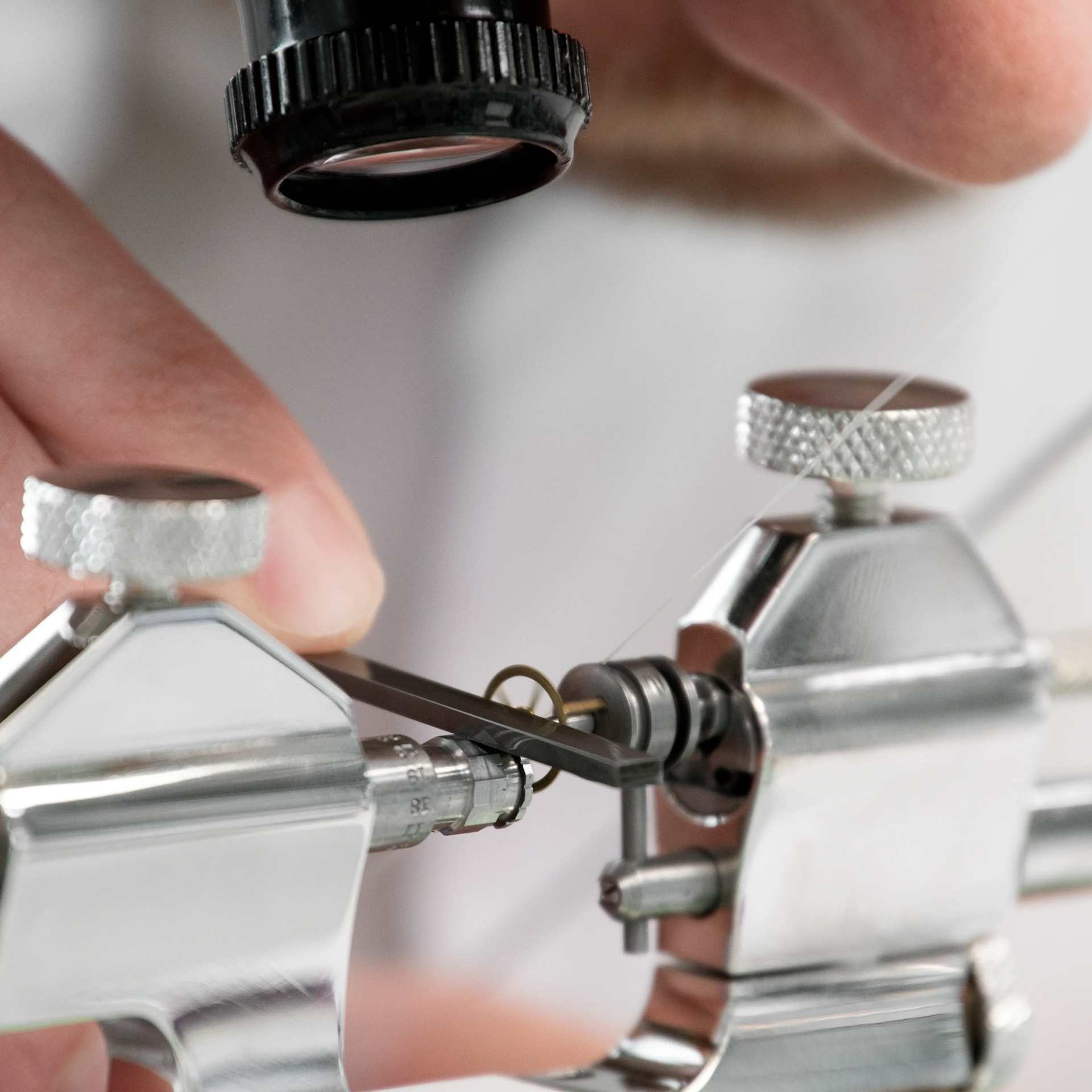
The Pivot Maker's tools
The Jacot Tool
To burnish the pivot, the watchmaker synchronizes the rotation of the part with the precise movement of the tool, achieving a perfect polish.
This process not only smooths the surface but also compresses and hardens the metal by pressing a burnisher on the pivots as it turns. The degree of precision is remarkable: the pivot’s diameter measures as little as 7 hundredths of a millimeter — roughly the width of a human hair. To measure such diameter, they use pivot gauges, a precision measuring tool with holes differing by just 2 microns.
This process not only smooths the surface but also compresses and hardens the metal by pressing a burnisher on the pivots as it turns. The degree of precision is remarkable: the pivot’s diameter measures as little as 7 hundredths of a millimeter — roughly the width of a human hair. To measure such diameter, they use pivot gauges, a precision measuring tool with holes differing by just 2 microns.
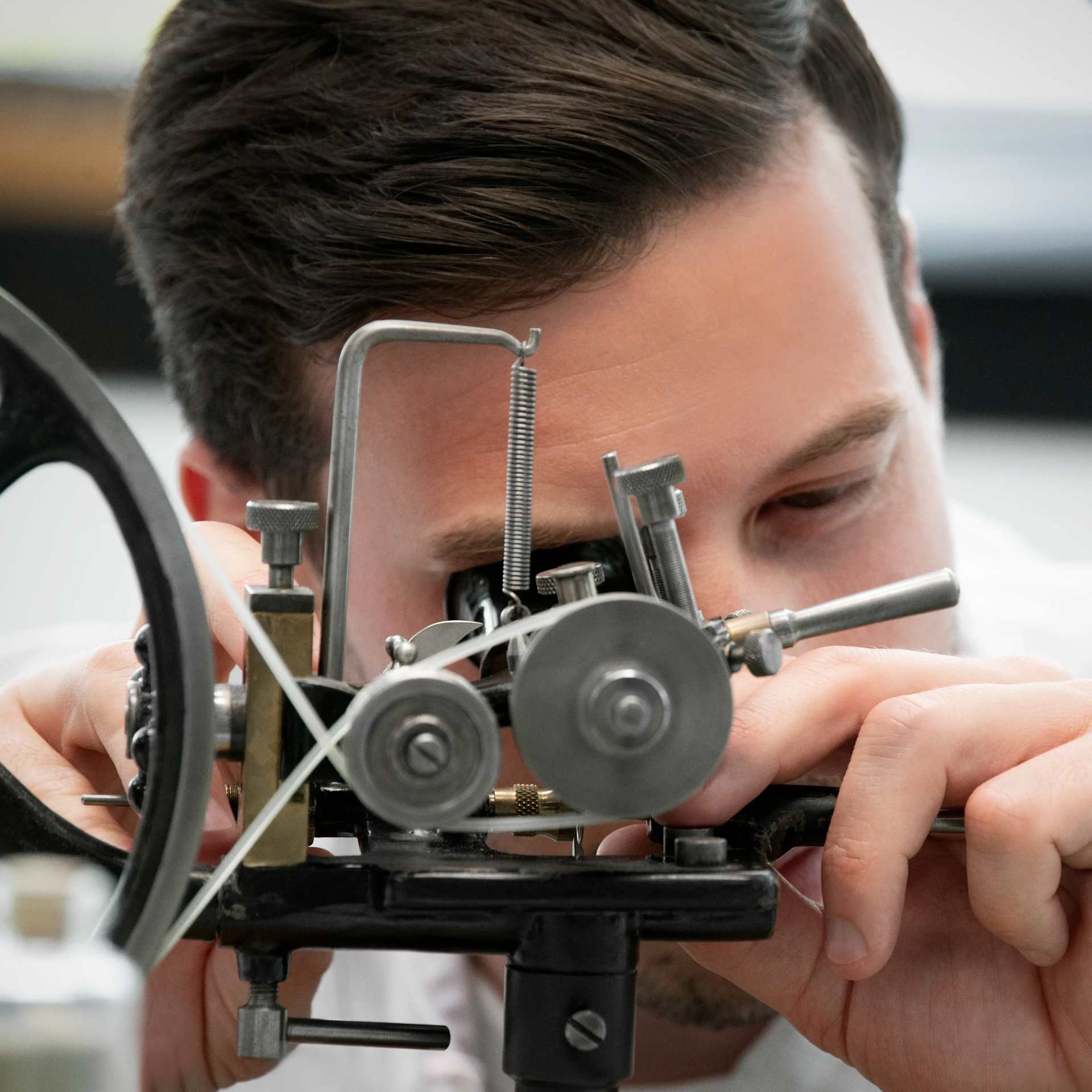
The Pivot Maker's Tools
The Rounding Machine
A watch consists of numerous gears (wheels and sprockets) that must be precisely adjusted to ensure accurate operation. The rounding machine plays a crucial role by refining the profile of these components, enabling them to achieve optimal gearing and maintain the watch's precision.

The pivot maker’s tools
The calipers
The huit-chiffre cliper, named after its horizontal figure-eight shape in French, is the tool used to check the flatness of wheel blanks — and to correct them if needed.
